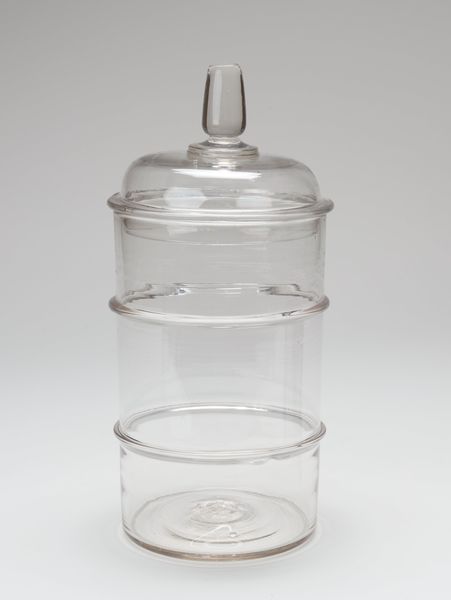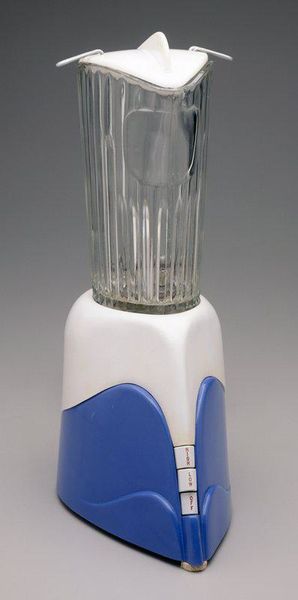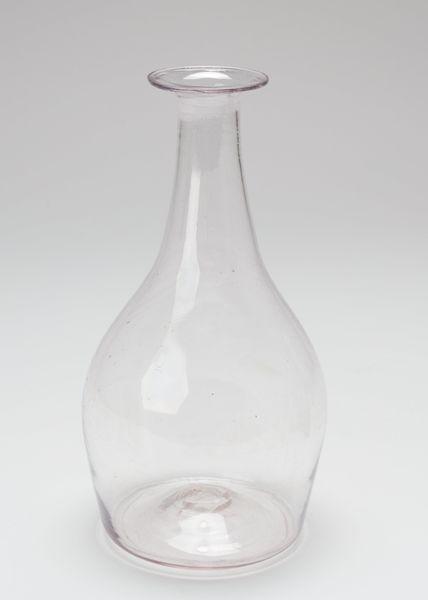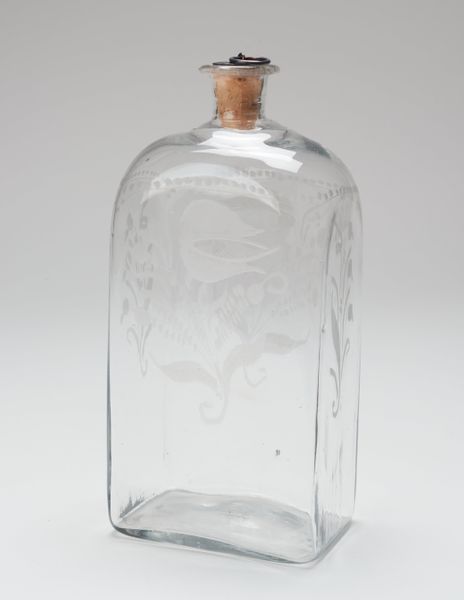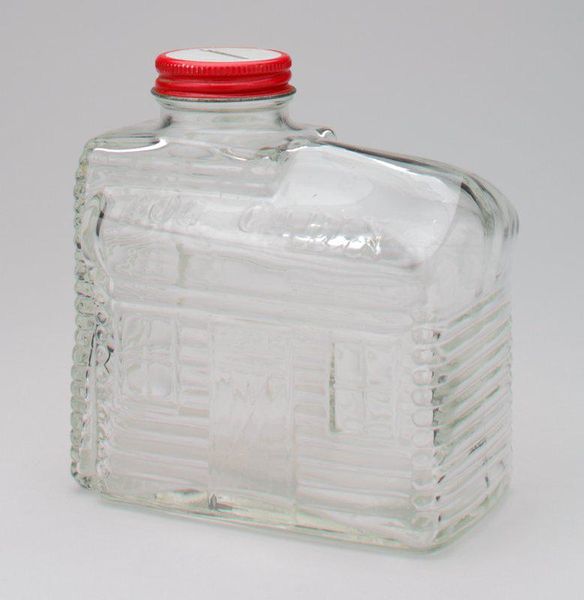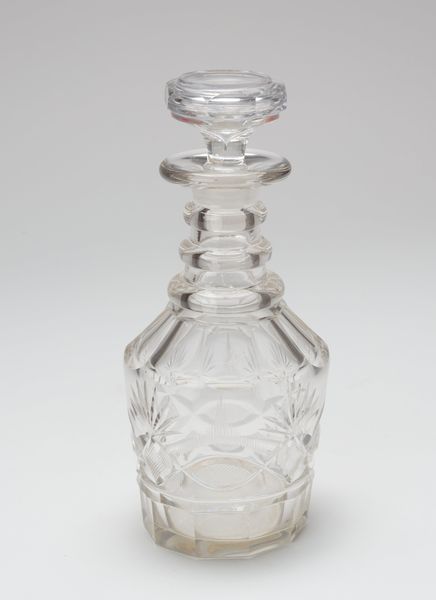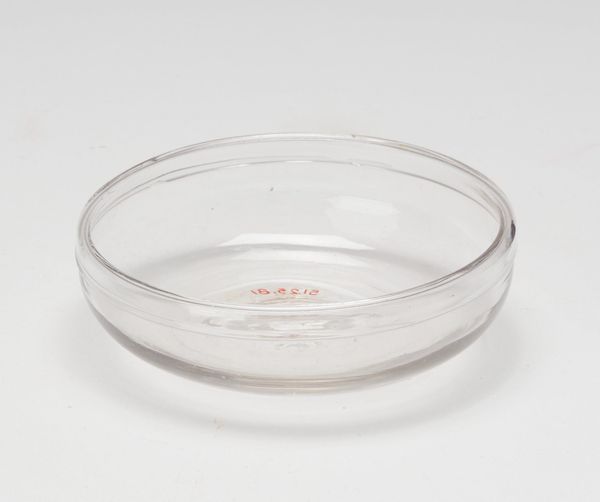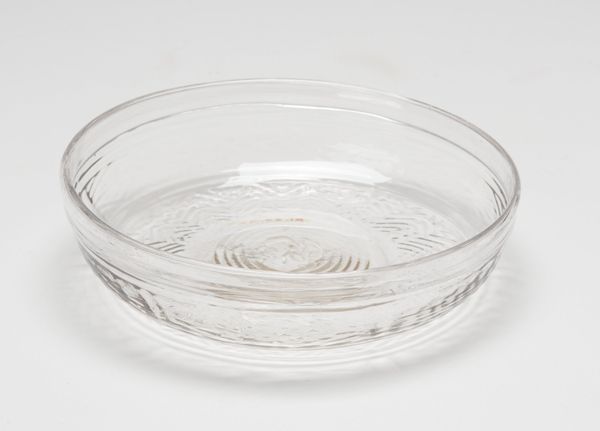
glass
#
glass
#
decorative-art
Dimensions: 9 1/2 x 4 1/2 x 4 1/2in. (24.1 x 11.4 x 11.4cm)
Copyright: Public Domain
Editor: This "Canister," crafted in glass during the 18th or 19th century, is simply beautiful in its austere form. I find the clear glass with those simple blue lines so elegant. What can you tell me about it from a curatorial perspective? Curator: Well, focusing purely on the form, note the pronounced cylindrical shape. It’s interesting how the horizontal bands disrupt the verticality, creating a segmented composition. How do you think this division affects the perception of the object's overall structure? Editor: I guess it makes it seem shorter, more grounded. Without the bands, it might feel taller, more fragile. The lines provide a sense of stability. What do you think about the artist's choice of materials? Is it just functional? Curator: The materiality is key. Glass, with its inherent transparency, dictates how we perceive space and volume. The glass allows one to perceive content in the canister; moreover, it brings focus to line, form, and its functionality. Is that blue purely ornamental? Editor: Hmm, it definitely provides contrast, directing your eye. I noticed the thickness of the glass also contributes to that sense of visual weight, grounding the vessel, just as the rings of color add measured weight, too. Curator: Precisely! We can consider the colour choice, thickness, as signs in this visual discourse. How is structure communicating and organizing information through this container? Consider how the canister is made by many glassblowers using different tools and kilns, each leaving behind a trace of a structural logic of time. Editor: Fascinating, I am learning to view a seemingly simple piece in so much more detail! Thanks! Curator: Indeed! Recognizing those nuances allows us to see objects, even functional ones, as structured works of art, replete with their own languages.
Comments
No comments
Be the first to comment and join the conversation on the ultimate creative platform.
